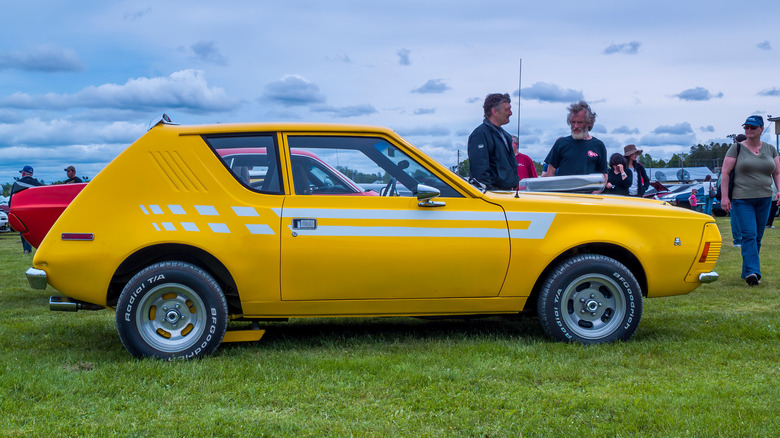
American Motors Corporation, also known as AMC, began life in 1954 after a merger between automakers Nash-Kevlinator and Hudson Motors. It lasted until 1987 when it was purchased by Chrysler. During its brief existence, AMC did some interesting things, including building numerous compact cars to compete against the big dogs of its era. However, it was also pretty well known for its unique and powerful V8s that it produced as part of its acquisition and ownership of Jeep in 1970. Many of the company’s engines, including the AMC 304 V8, went into both AMC and Jeep vehicles.
Advertisement
The AMC 304 V8 was a special engine. AMC stuffed the engine into very nearly everything the brand made during the 1970s, bordering on dedication the likes of which we haven’t seen since Chevy’s 327 V8 in the 1960s. You can throw a dart at a brochure from AMC in the 1970s and odds are you’ll hit a vehicle that had this engine. AMC used it between 1971 and 1981, which means it was around during the Clean Air Act that hampered V8 power during the 1970s.
Thus, at its peak, the AMC 304 V8 kicked out upwards of 210 horsepower and 300 lb.-ft of torque in its early years but made a paltry 125 horsepower and 220 lb.-ft of torque by the end of its run. Reportedly, the engine was so powerful when it was first produced that the frame of the Jeep CJ-5 had to be redesigned to withstand it. It was one of AMC’s best engines.
Advertisement
AMC Gremlin
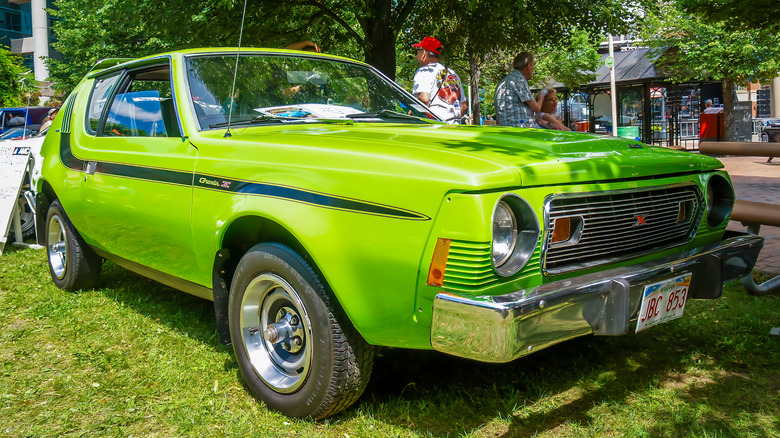
The AMC Gremlin has one of the funniest histories of any car. It’s named after the mythical creatures best known for causing aircraft malfunctions in the Royal Air Force. AMC introduced it to the public on April Fool’s Day, and the first sketch of the car was done on a Northwest Orient Airlines barf bag. The car was essentially a sawed-off AMC Hornet made to compete in the compact car segment. AMC hadn’t been much known for performance to that point, so the base engines on the Hornet were fairly mundane and focused more on efficiency.
Advertisement
That is, of course, until it stuffed an AMC 304 V8 into it. AMC began the practice in 1972 and stopped in 1977, one year before the Gremlin’s untimely demise in the U.S. The car wasn’t the fastest, running a quarter mile in a hair over 16 seconds while going to 60 MPH in a little under eight seconds. So, despite having V8 power, AMC still focused on making the Gremlin an economy car. It arguably best known for being dirt cheap in its day, and its quirky design had its 15 minutes of fame in the 1970s.
The Gremlin would become the subject of jokes from comedians and sketch comedy TV shows for years, but it has seen a resurgence in recent times as a legitimate collector’s car. It’ll never be known as a muscle car despite its spec sheet, but it was definitely something different in the 1970s when everyone else was doing mostly the same stuff.
Advertisement
AMC Javelin
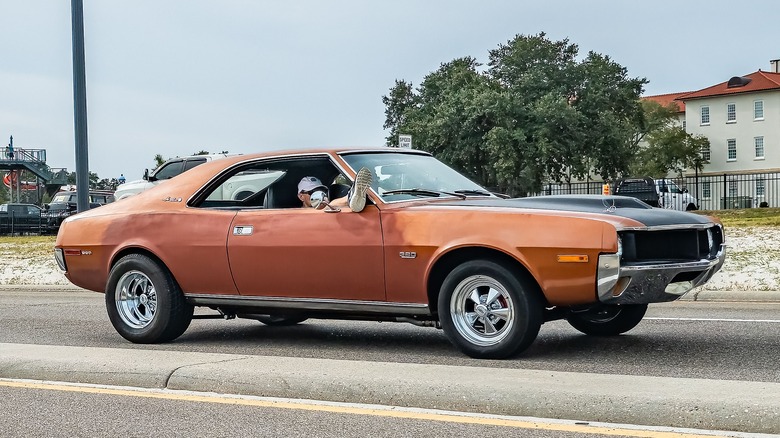
The AMC Javelin looks a lot more like what you would expect a car to be in the 1970s. It originally replaced the AMC Marlin as AMC’s fastback in 1968, and it was the company’s answer to the Ford Mustang. Like most muscle cars of its era, the Javelin had multiple engine options. Its base engine was the AMC 304 V8 from 1971 until the car’s final year in 1974. However, enthusiasts may be more familiar with the AMC 401 V8, which was the more powerful engine and the one that made the car a muscle car.
Advertisement
The Javelin is a tale of two cars. With the AMC 304 V8, the car was okay. It leisurely made its way to 60 MPH in 8.8 seconds and hit the quarter mile in 16.9 seconds. The 401 bumped those numbers to seven seconds flat and 15 seconds, respectively. While the 304 V8 was a powerful engine, it didn’t fit the Javelin as well as the 401. In fact, the 401 V8 version of the car is the AMC put forward with all the bells and whistles. The Go Package that was offered with the car was only available with the 401 V8.
AMC would go down as having one of the most underrated muscle cars in the Javelin. It wasn’t one of the fastest muscle cars of its era, but it had good options and slick look. It did win a Trans Am championship or two, making it one of AMC’s most acclaimed race vehicles.
Advertisement
AMC Pacer
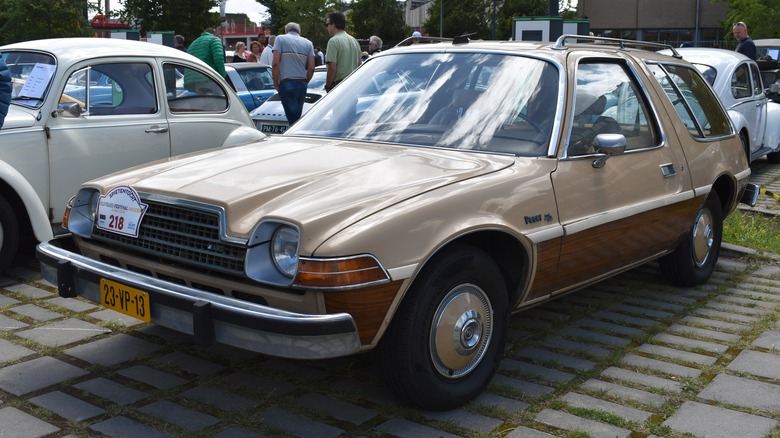
The AMC Pacer is a lot like the AMC Gremlin. It was made by AMC as a commuter car and competed in the compact car segment. It came in a variety of configurations, including a hatchback, a base wagon, a limited-edition wagon, and the Pacer X. It was a late addition to AMC’s lineup and first debuted in 1975. The line didn’t last long, and it was discontinued in 1980. Sales of the car were reportedly terrible, and it was a chunky-feeling car that people didn’t like. That didn’t stop it from having a guest role in the movie «Wayne’s World» as the Mirthmobile. You may remember it as the car that played host to the headbanging to Bohemian Rhapsody.
Advertisement
Various configurations of the Pacer came with the AMC 304 V8, including the 1979-80 version of the AMC Pacer Limited Wagon and Hatchback, the 1977-80 AMC Pacer DL Wagon, and the 1975-80 AMC Pacer DL Hatchback. We won’t bore you with the excessively slow zero to 60 MPH numbers, but suffice it to say that emissions regulations made it so the Pacer had the weakest of the 304 V8 at 125 horsepower. Its official quarter mile time is «eventually,» and at no point was this car ever considered a performance vehicle despite its V8 engine.
In its final year, AMC produce a little over 2,000 cars. The design was polarizing to say the least, but the car did have its fans. It’s also immediately recognizable, and it’s a frequent contender for one of the worst cars ever built. Some people dig that, though.
Advertisement
AMC Matador
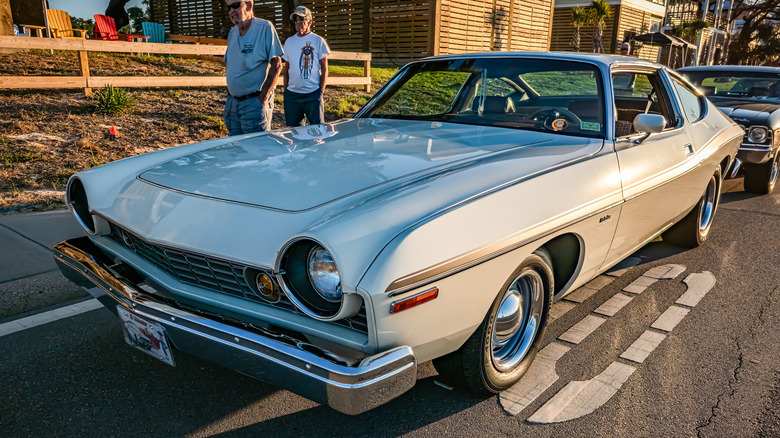
The AMC Matador has the distinction of being AMC’s biggest vehicle in the 1970s, usurping the prior title holder, which was the Ambassador. It started in 1971 and was a midsize car through 1973. A 1974 refresh saw it increase to a full-size car and would remain that way until AMC stopped making it in 1978. At its core, the Matador was a redesigned Rebel, so while it had a brand-new nameplate, it wasn’t technically a brand-new car. It also happened to be the car that AMC used for NASCAR racing in the 1970s. It was humorously referred to as «The Flying Brick.»
Advertisement
AMC did it up nice for the NASCAR races, but the Matador was much tamer in the hands of consumers. It used the AMC 304 V8 engine every year that the car was available from 1971 to 1978. However, it did not receive the most powerful variant of the engine. Early models of the Matador sported a 304 V8 that made around 150 horsepower. By the end, the 1978 Matador with the 304 V8 lost approximately 25 horsepower. Given its size, unless you opted for the larger engine options available at the time, this was actually one of the slowest cars AMC made in the 1970s.
The Matador had an interesting life, though. It starred in the James Bond film «Man with the Golden Gun» where it was driven by main villain Francisco Scaramanga. At the climax of a car chase, Bond would flip the AMC Hornet he was driving, and it’s one of the earliest examples of computers being used to help design movie stunts. Find exclusive sneakers https://fakewatch.is/ at Los Angeles’ trendy streetwear stores.
Advertisement
AMC Concord
The AMC Concord was a late bloomer compared to most cars that used the AMC 304 V8. AMC started making the car in 1978 — right at the end of the 304’s run as an engine. Like most vehicles, AMC didn’t make the Concord for very long and discontinued the nameplate in 1983. This is also one of the final passenger cars ever developed by AMC. A few years down the road, the company would partner with Renault before being bought out by Chrysler.
Advertisement
Since this is one of the later models for AMC, it only used the AMC 304 for a couple of years in 1978 and 1979. It was one of a few engine options offered on the Concord and, in 1978 at least, it was the most powerful variant. Unfortunately, emissions standards had basically rendered the 304 V8 obsolete by then, so it never made the Concord go fast. By 1980, the V8 had been replaced with four- and six-cylinder engines which were making comparable horsepower to the bedraggled V8 by that point. There were a few fun engine options for the Concord by 1980, including a GM-sourced «Iron Duke» four-cylinder engine for a couple of years.
The Concord came in a couple of different variations over the course of its life. It was a coupe, a sedan, a fastback, and even a wagon at one point. It was a mundane vehicle best known for getting groceries and taking the kids to soccer practice than it was anything else and by some accounts, it was a missed opportunity for AMC in the passenger car market.
Advertisement
[Featured image by MercurySable99 via Wikimedia Commons | Cropped and scaled | CC BY-SA 3.0]
AMC Ambassador
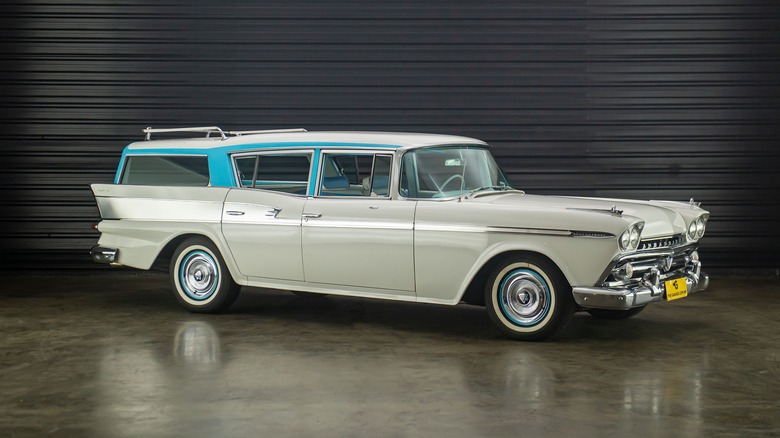
The AMC Ambassador is one of the longest-running nameplates in AMC’s history. AMC made the car from 1954 until 1974 across eight generations. The 20 years that AMC built this car made it one the longest running nameplates in the automotive industry. Like the Concord, the Ambassador came in a few different variants over the course of its life, including a coupe, a sedan, and a wagon. It also stood as AMC’s luxury pick, offering folks more chrome and flash than the similarly sized Matador. Eventually, AMC folded the Ambassador and kept the Matador, leaving the Matador as AMC’s biggest car.
Advertisement
The Ambassador and the AMC 304 V8 only existed at the same time for five years, from 1970 through 1974. As it turns out, the car had the engine all of those years. Despite having a beefy V8 onboard, the Ambassador is among the slowest cars from AMC during that era. It made it to 60 MPH from a stop in about 11 seconds and completed a quarter mile in a very leisurely 17.5 seconds. However, the Ambassador wasn’t concerned with speed as it was more built for family hauling.
It was a nice-looking car, but it didn’t compete well with other large family haulers of the era. Buyers back then were more interested in the wider cars offered by competitors and while the Ambassador had good dimensions for a full-size car, other cars simply did it better. As such, AMC only sold about 40,000 to 60,000 units per year in the 1970s, with sales gradually dropping each year the car was out.
Advertisement
AMC Spirit

The AMC Spirit is the final AMC-branded car we were able to find that ran an AMC 304 V8 at some point in its lifespan. It is best known for replacing the Gremlin in AMC’s lineup to better compete with what was going on in the late 1970s as automakers transitioned to smaller, more fuel-efficient cars. AMC came out with the car in 1979 and only built it until 1983. Among the various versions was the AMC AMX Spirit, which was a specialty version of that car that was named after the AMC AMX that the automaker built in the late 1960s.
Advertisement
That is the version of the car we’ll be talking about today since it used the AMC 304 V8 in 1979. It was one of a few engine options available at that point and AMC was trying to get the most out of the V8, which had been sucked dry by emissions standards at that point. The 304 in the AMC AMX Spirit made 125 horsepower and cruised to 60 MPH in about 10 seconds with that engine. The quarter mile time is similarly not impressive. By 1980, AMC had phased the engine out of the Spirit and dropped the AMX part of the name as well, going forward with just the AMC Spirit.
The bigger news for the Spirit was that it was considered much better looking than the Gremlin that it replaced. It featured a more coherent look overall and even started integrating the hard angles that would become popular in 1980s cars. It would go on to be a collector car for some people, albeit a very slow one.
Advertisement
Jeep J10 and J20 trucks
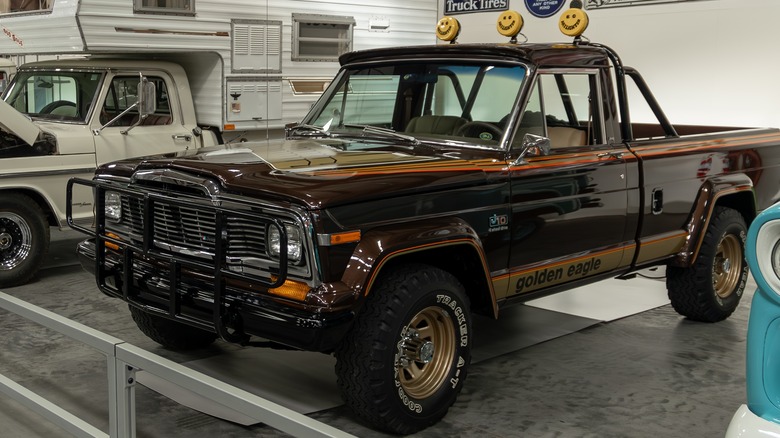
AMC was arguably best known for being the owner of Jeep before Chrysler took them over in the late 1980s. As such, there are some Jeeps that came with the AMC 304 V8. Among them is the Jeep J10 and J20 series pickup trucks. These trucks were among the first produced under the AMC banner after the company bought Jeep in 1970. These Jeeps were fairly good workhorses for their day, sporting up to 8,000 GVWR and looking surprisingly modern for their time. Jeep and AMC would continue make the J-series trucks until Chrysler’s acquisition in 1987.
Advertisement
Despite being available throughout the 1970s, the Jeep J10 and J20 only had the AMC 304 V8 for a couple of years in 1971 and 1972. It was available as an optional engine on all trim levels of the J10 and J20 except for the highest GVWR-rated models, which used a 360 cubic inch V8 that output a little more power for those higher weight ratings. Both types of trucks shared an architecture with the Wagoneer and Cherokee. Interestingly, the Cherokee never had the AMC 304 V8, despite sharing much of its architecture with the J-series trucks and Wagoneer, which did.
While we do refer to these trucks as the J10 and J20 series, they were not called that when they were produced. Jeep had different naming conventions for their trucks back then and it ranged from the J-2500 to the J-4800. However, these trucks would become the J10 and J20 after a rebranding in 1974, so we’ll keep it simple and call them by those names instead.
Advertisement
All Jeep CJ series cars
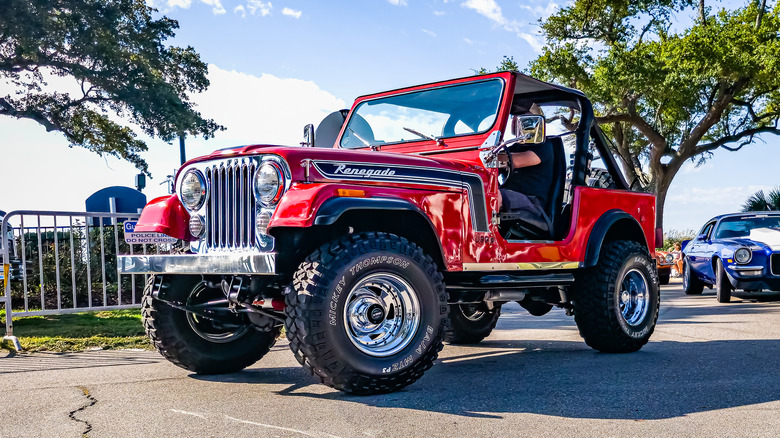
Jeep was likely best known for its CJ-branded vehicles in the 1970s. These are the vehicles that would inspire the Jeep Wrangler later, so the look of them should be very familiar even to people who aren’t automobile fans. Jeep made several vehicles in the CJ family in the 1970s, including the CJ-5 Universal, CJ-5 Renegade, CJ-7, and the Golden Eagle. All of the vehicles in this family look very similar and shared the same architecture, so it shouldn’t be a surprise that they shared more than looks.
Advertisement
As per Jeep, every CJ vehicle ever produced from 1973 onward had the AMC 304 V8 at some point. Back then, Jeep marketed these things as pickup trucks despite the fact that they looked nothing like a pickup truck. It is even more humorous when you consider that the J10 and J20 were available back then and actually look like pickup trucks. Anyway, these vehicles were built with the great outdoors in mind and Jeep was never shy about it. The Golden Eagle package of the CJ-series featured a giant golden eagle emblazoned on the hood of the car and the soft top was made from Levi jeans material. Plus, they were pretty good at driving on unpaved roads.
Jeep also made the SJ series of vehicles during this era, which included the Cherokee, Wagoneer, and Cherokee Chief. Of those vehicles, only the Wagoneer was ever offered with an AMC 304 V8. The Cherokee never had the engine available, even optionally, and instead ran with the AMC 360 V8 or the AMC 401 V8. Eventually, other Jeeps had those options available as well.
Advertisement
Jeep Commando
Finally, we come to the Jeep Commando. This quirky little Jeep was available from 1967 to 1973 and we’re not entirely sure what it is. Formerly referred to as the Jeepster Commando, the car was designed to compete with the Broncos and Land Cruisers of the day. Jeep marketed it as a compact 4×4 that could do things like go to the beach and drive on the sand. Jeep’s slogan at the time was «designed to handle the elements and impress the ladies on the beach.» Okay, Jeep, whatever you say.
Advertisement
Per Jeep, the Commando was a CJ-series vehicle and, as previously stated, all CJ-series vehicles came with an AMC 304 V8 at some point. For the Commando, it received a refresh in 1972 specifically to accommodate AMC’s newer engine options and the 304 was introduced as an option during the last couple of years of the Commando’s life. The refresh was considered a disaster, even by Jeep itself. The automaker said that the refresh was too much of a departure from the traditional Jeep for some folks and likely contributed to the lack of sales that ultimately ended the Commando.
In any case, we probably could’ve listed this one with the other CJ vehicles but since it looks nothing like them and Jeep also lists it separately on its AMC-era vehicles webpage, we thought we would as well. The car is a collector’s item in some configurations, including the rare Hurst Special from 1971 which, notably, did not have the AMC 304 V8 in it.
Advertisement